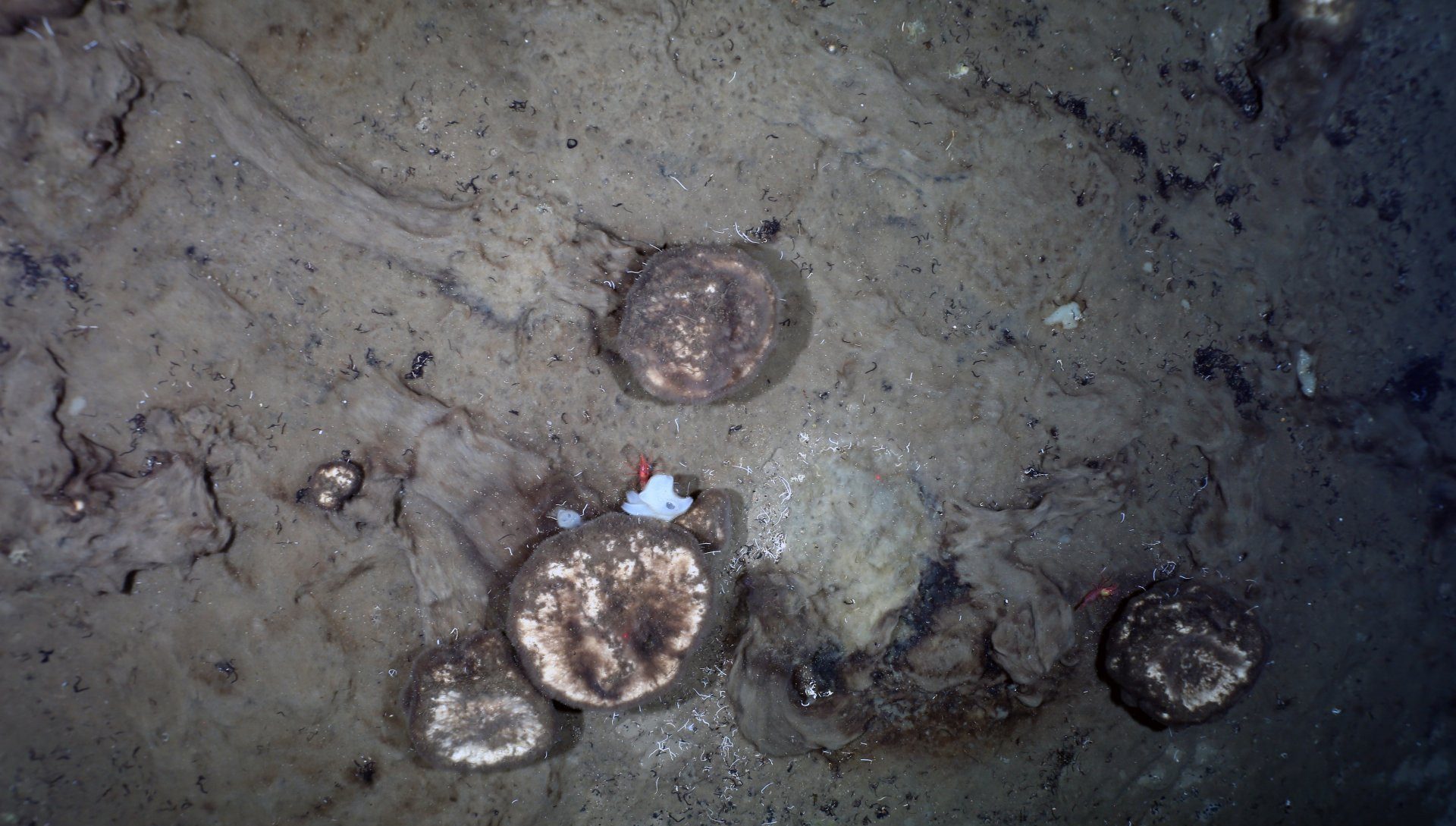- Press Office
- Press releases 2021
- Sponge paths on the ocean floor
Surprise in the deep sea: Researchers discover sponge paths on the ocean floor
The surprise was great when researchers looked at high-resolution images of the sea floor of the Arctic deep sea in detail: Path-like tracks across the sediments ended where sponges were located. These trails were observed to run in all directions, including uphill. "We conclude from this that the sponges might actively move across the sea floor and leave these traces as a result of their movement," reports Dr. Teresa Morganti, sponge expert from the Max Planck Institute for Marine Microbiology in Bremen. This is particularly exciting because science had previously assumed that most sponges are attached to the seafloor or are passively moved by ocean currents and, usually down slopes.

“There are no strong currents in the Arctic deep sea that could explain the structures found on the sea floor,” explains expedition leader Prof. Anthe Boetius, who works together with deep sea biologist Dr. Autun Purser from the Alfred Wegener Institute, Helmholtz Center for Polar Marine Research (AWI) in the HGF-MPG Joint Research Group for Deep-Sea Ecology and Technology. The recently published recordings were made during an expedition at 87 °North at the Karasik Seamount about 350 kilometers away from the North Pole with the research icebreaker Polarstern in 2016 with a towed camera system OFOBS (Ocean Floor Observation and Bathymetry System). “With OFOBS we can create 3D models from the deep sea. The seamount’s summit was densely populated with sponges. 69 percent of our images showed trails of sponge spicules, many of which led to live animals,” reports Autun Purser.
Many questions arise from these observations: Why do the sponges move? How do they orient themselves? Possible reasons for locomotion could be foraging, avoiding unfavorable environmental conditions, or to distribute offspring. Searching for food in particular plays a major role in nutrient-poor ecosystems such as the Arctic deep sea. Sponges have an important function there anyway. As filter feeders they can utilize particle and dissolved organic matter and are intensively involved in nutrient and matter recycling by means of their bacterial symbionts. Sponges also provide arctic fish and shrimp useful structures to use as a habitat. However, the scientists still have to investigate the mechanisms of locomotion.
(Based on a press release by the Alfred Wegener Institute, Helmholtz Center for Polar Marine Research)
Original publication
Teresa M. Morganti, Autun Purser, Hans Tore Rapp, Christopher R. German, Michael V. Jakuba, Laura Hehemann, Jonas Blendl, Beate M. Slaby, Antje Boetius: In situ observation of sponge trails suggests common sponge locomotion in the deep central Arctic. Current Biology (2021).
Please direct your queries to:
Dr. Teresa Maria Morganti
Tel.: +34(0) 622 920 462 or via Skype @teremo83; E-Mail: [Bitte aktivieren Sie Javascript]
Dr. Autun Purser
Tel.: +49(0) 471 4831-1740; E-Mail: [Bitte aktivieren Sie Javascript]
Folke Mertens, Press Dept. of the Alfred-Wegener-Institute, Helmholtz-Zentrum für Polar- und Meeresforschung (AWI)
Tel.: +49(0) 471 4831-2007; E-Mail: [Bitte aktivieren Sie Javascript]
Head of Press & Communications
MPI for Marine Microbiology
Celsiusstr. 1
D-28359 Bremen
Germany
|
Room: |
1345 |
|
Phone: |

